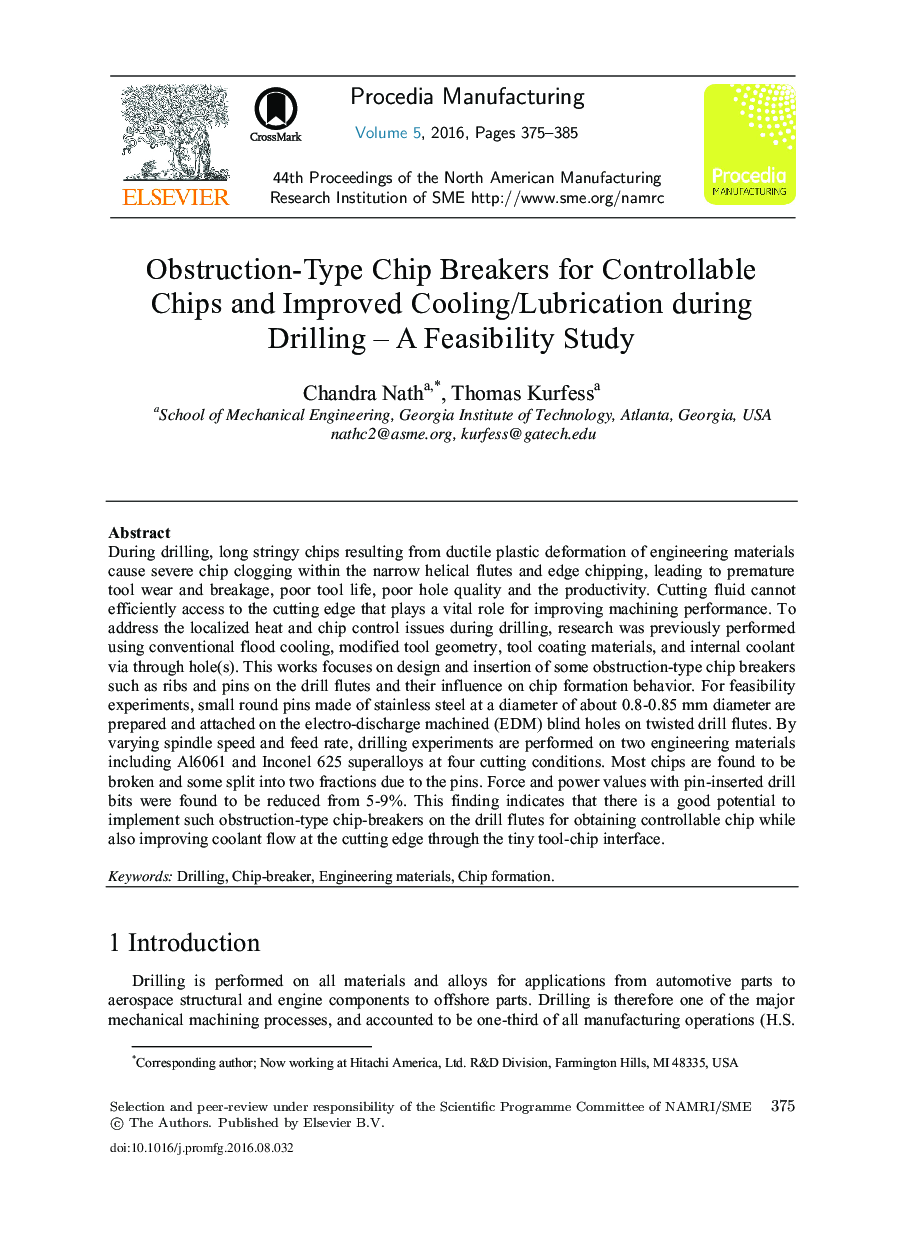| Article ID | Journal | Published Year | Pages | File Type |
|---|---|---|---|---|
| 5129032 | Procedia Manufacturing | 2016 | 11 Pages |
During drilling, long stringy chips resulting from ductile plastic deformation of engineering materials cause severe chip clogging within the narrow helical flutes and edge chipping, leading to premature tool wear and breakage, poor tool life, poor hole quality and the productivity. Cutting fluid cannot efficiently access to the cutting edge that plays a vital role for improving machining performance. To address the localized heat and chip control issues during drilling, research was previously performed using conventional flood cooling, modified tool geometry, tool coating materials, and internal coolant via through hole(s). This works focuses on design and insertion of some obstruction-type chip breakers such as ribs and pins on the drill flutes and their influence on chip formation behavior. For feasibility experiments, small round pins made of stainless steel at a diameter of about 0.8-0.85Â mm diameter are prepared and attached on the electro-discharge machined (EDM) blind holes on twisted drill flutes. By varying spindle speed and feed rate, drilling experiments are performed on two engineering materials including Al6061 and Inconel 625 superalloys at four cutting conditions. Most chips are found to be broken and some split into two fractions due to the pins. Force and power values with pin-inserted drill bits were found to be reduced from 5-9%. This finding indicates that there is a good potential to implement such obstruction-type chip-breakers on the drill flutes for obtaining controllable chip while also improving coolant flow at the cutting edge through the tiny tool-chip interface.
